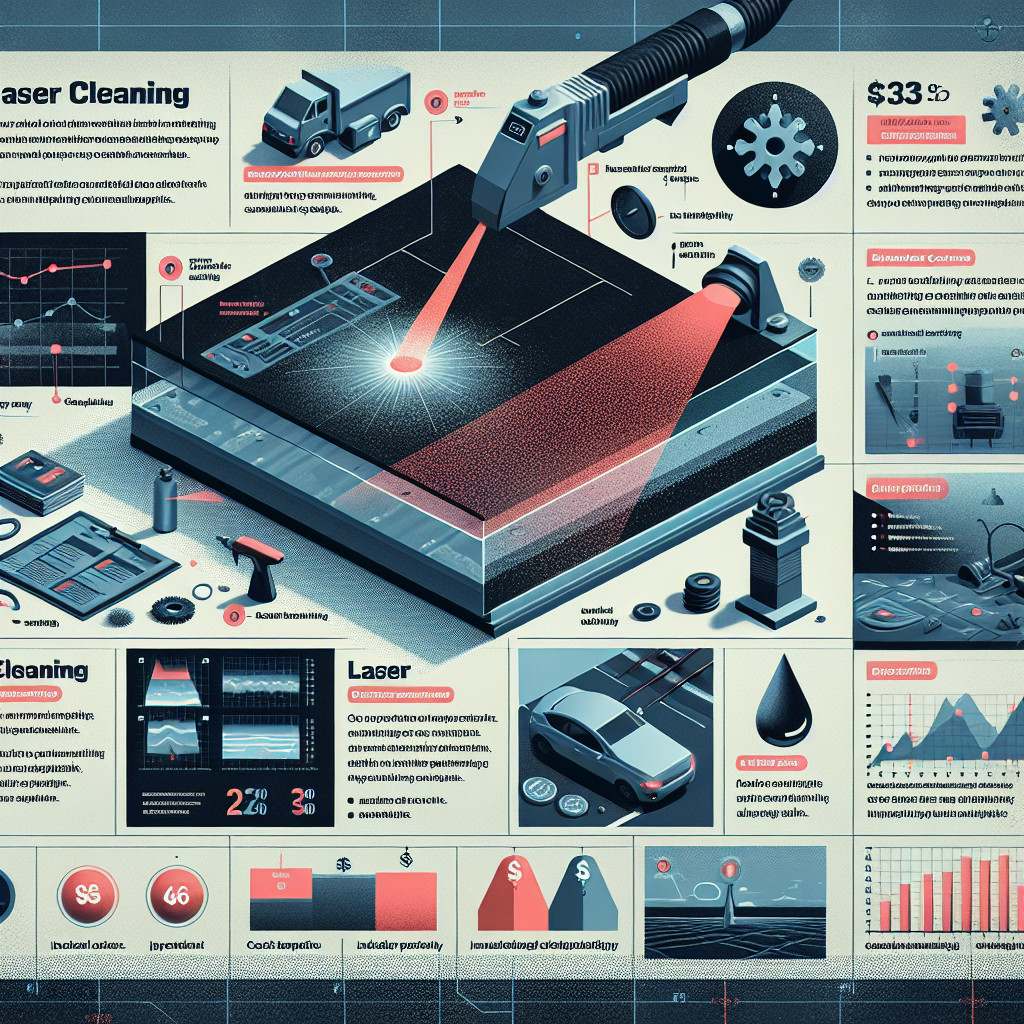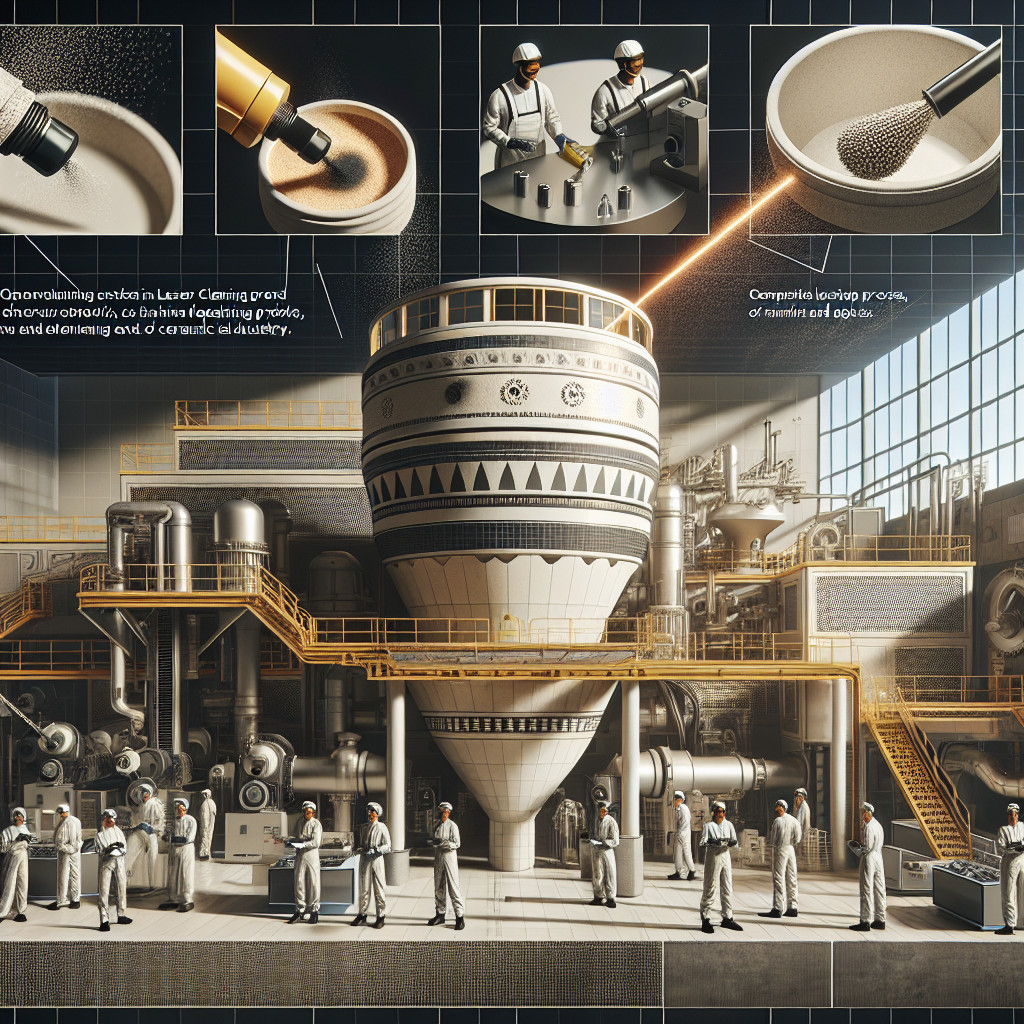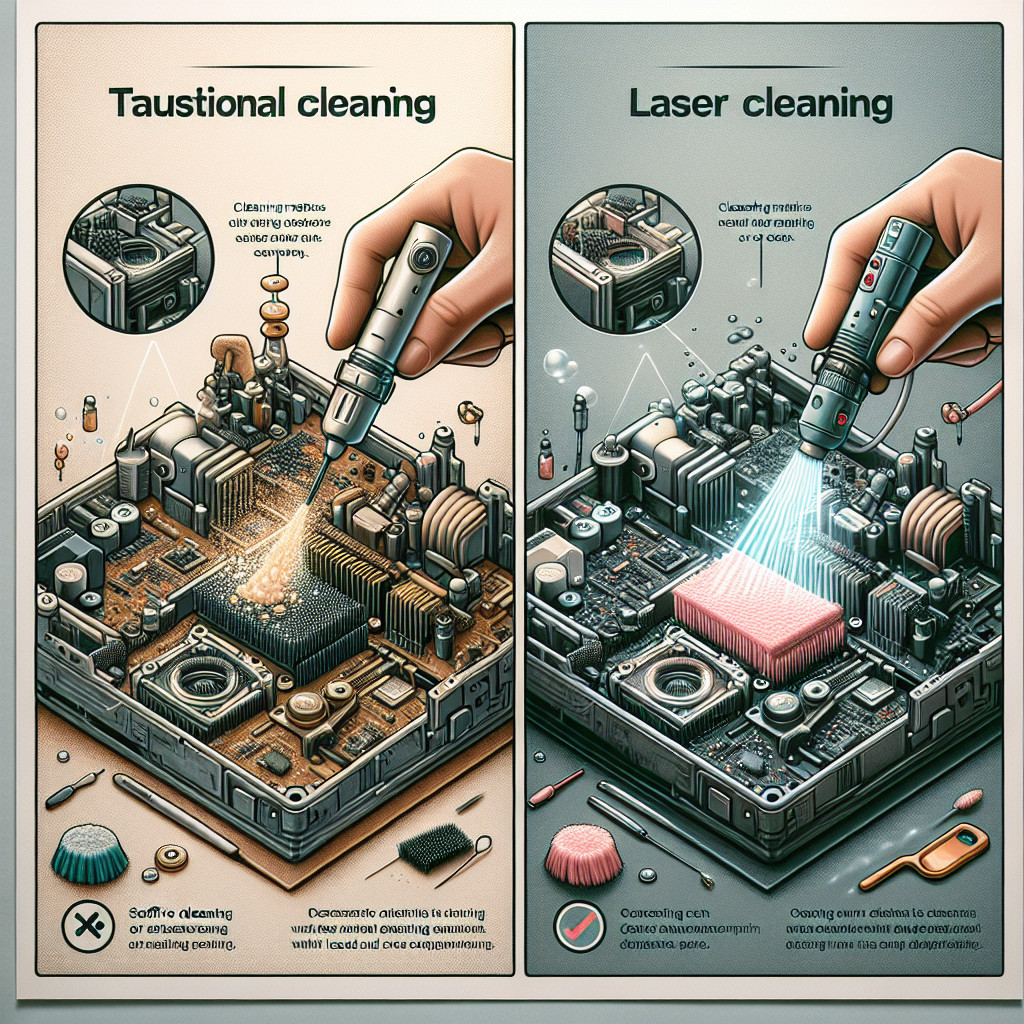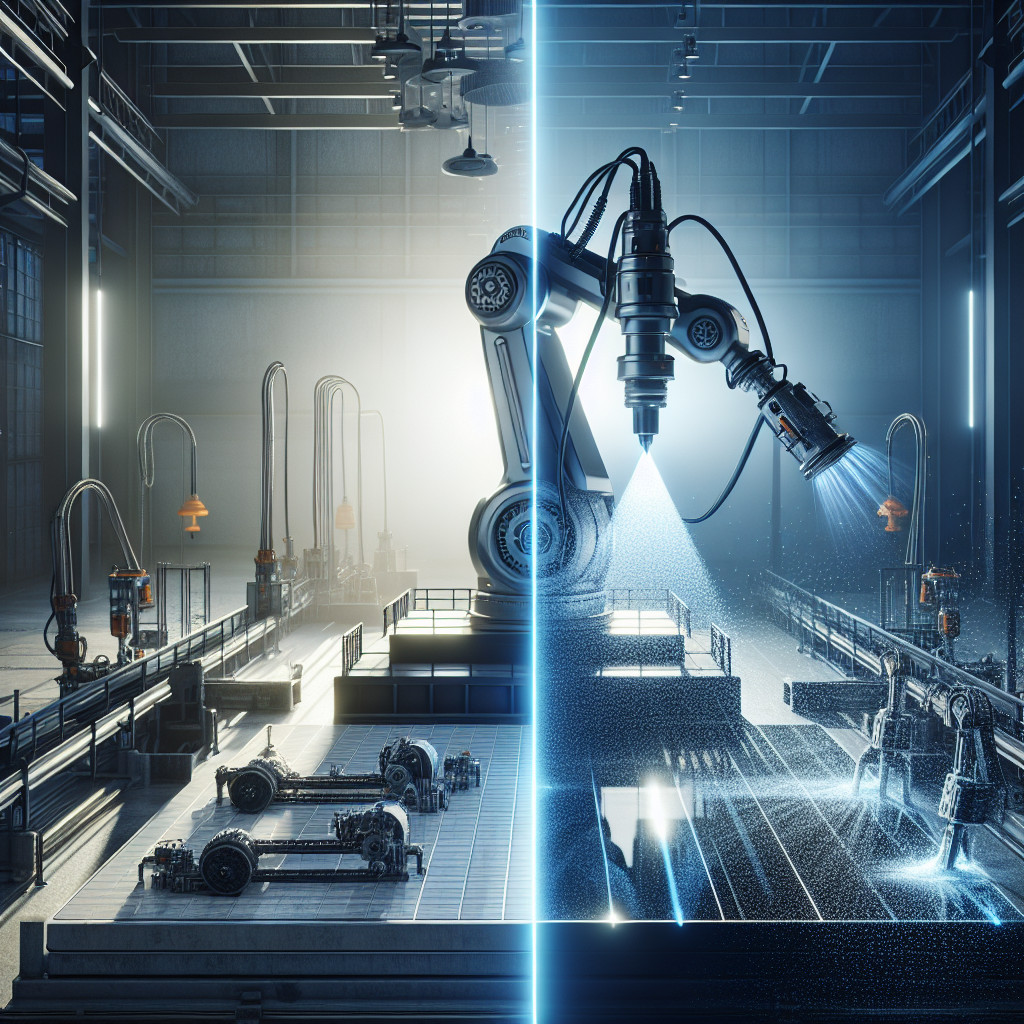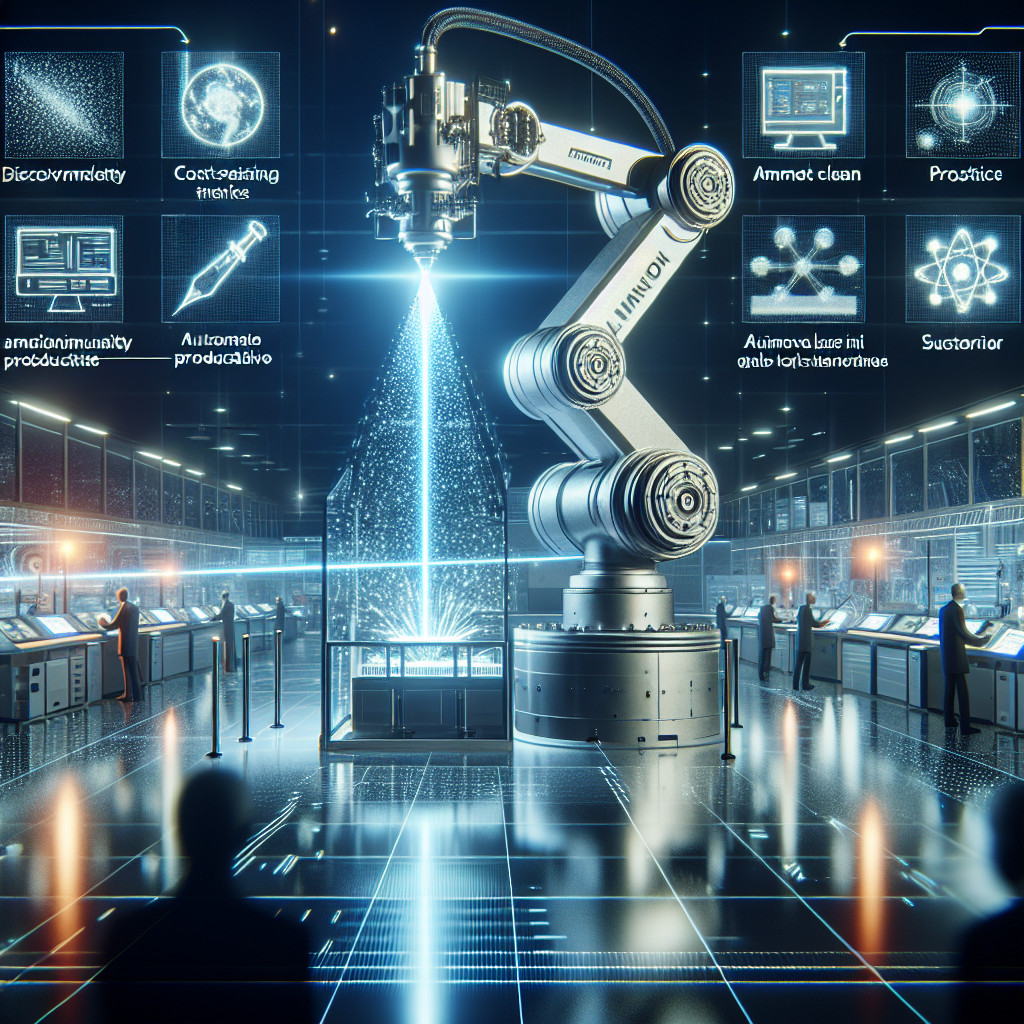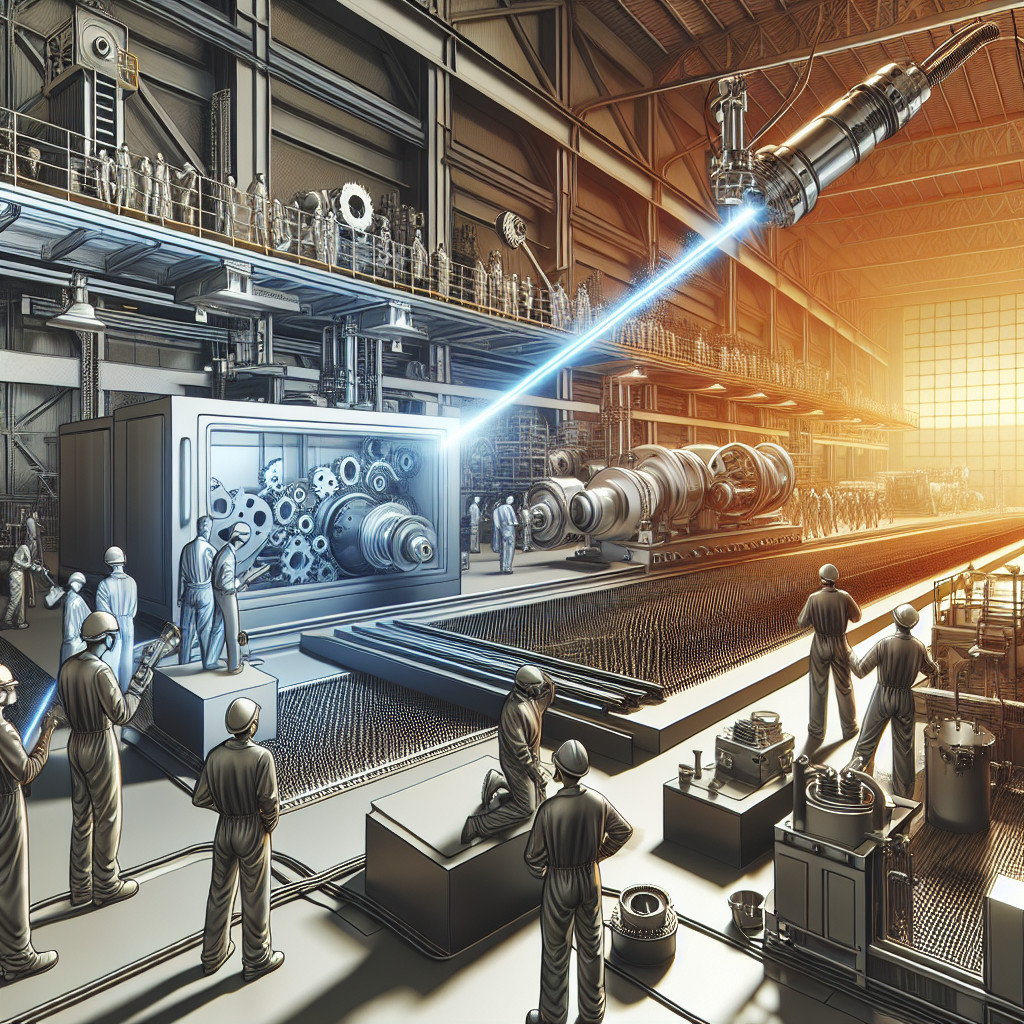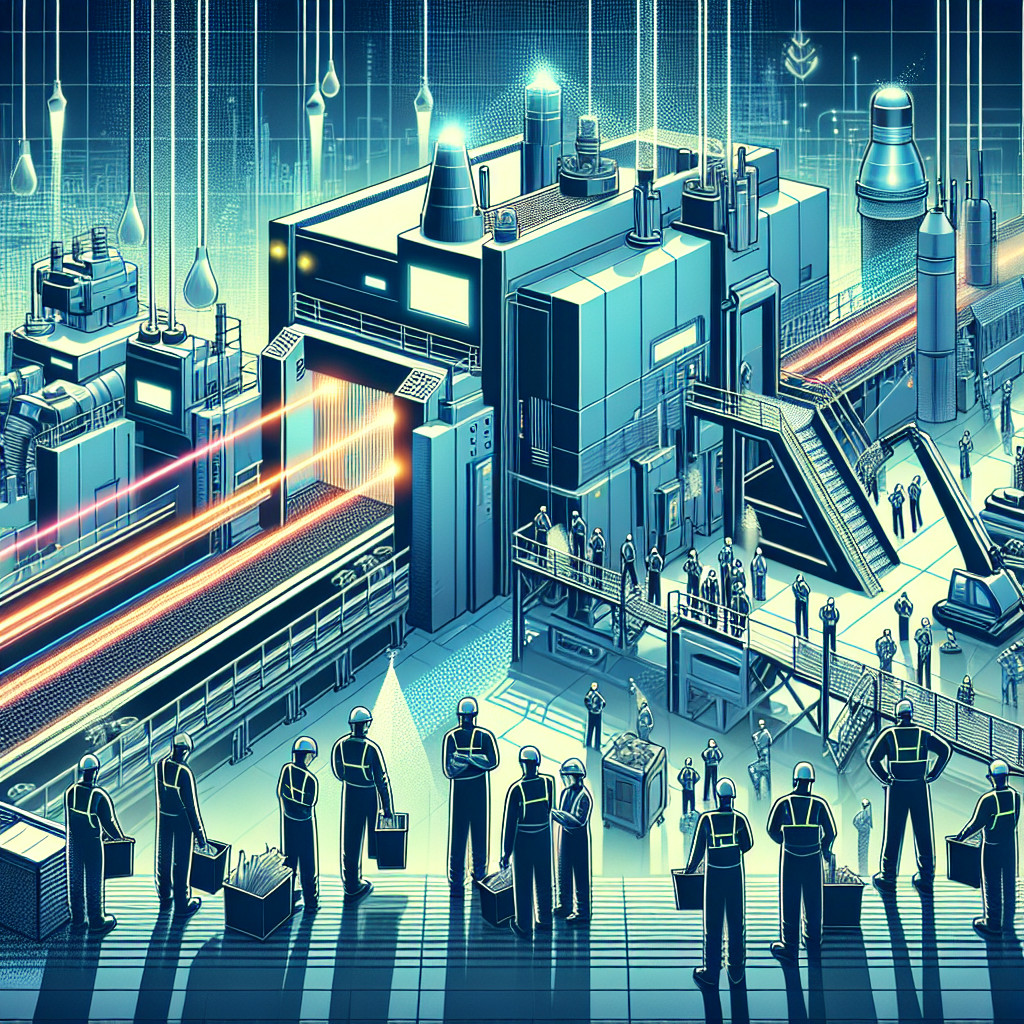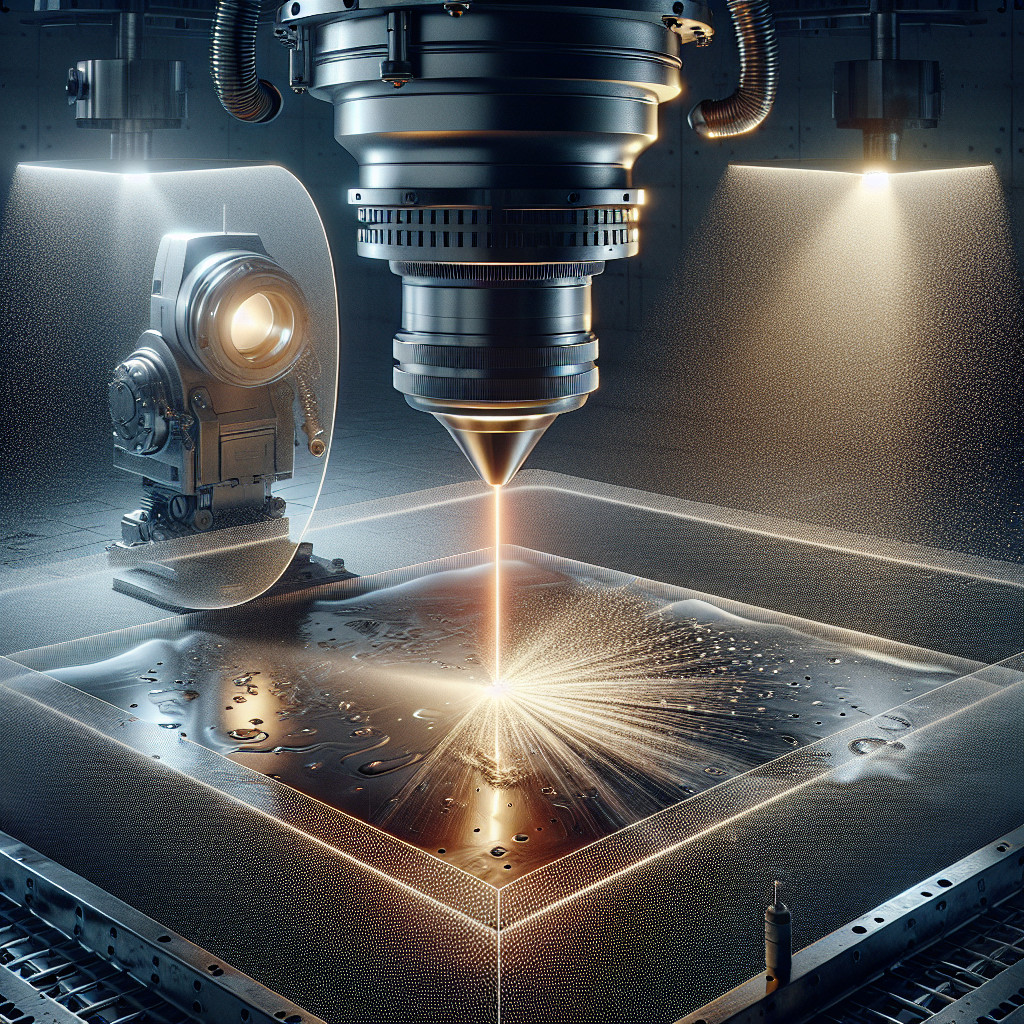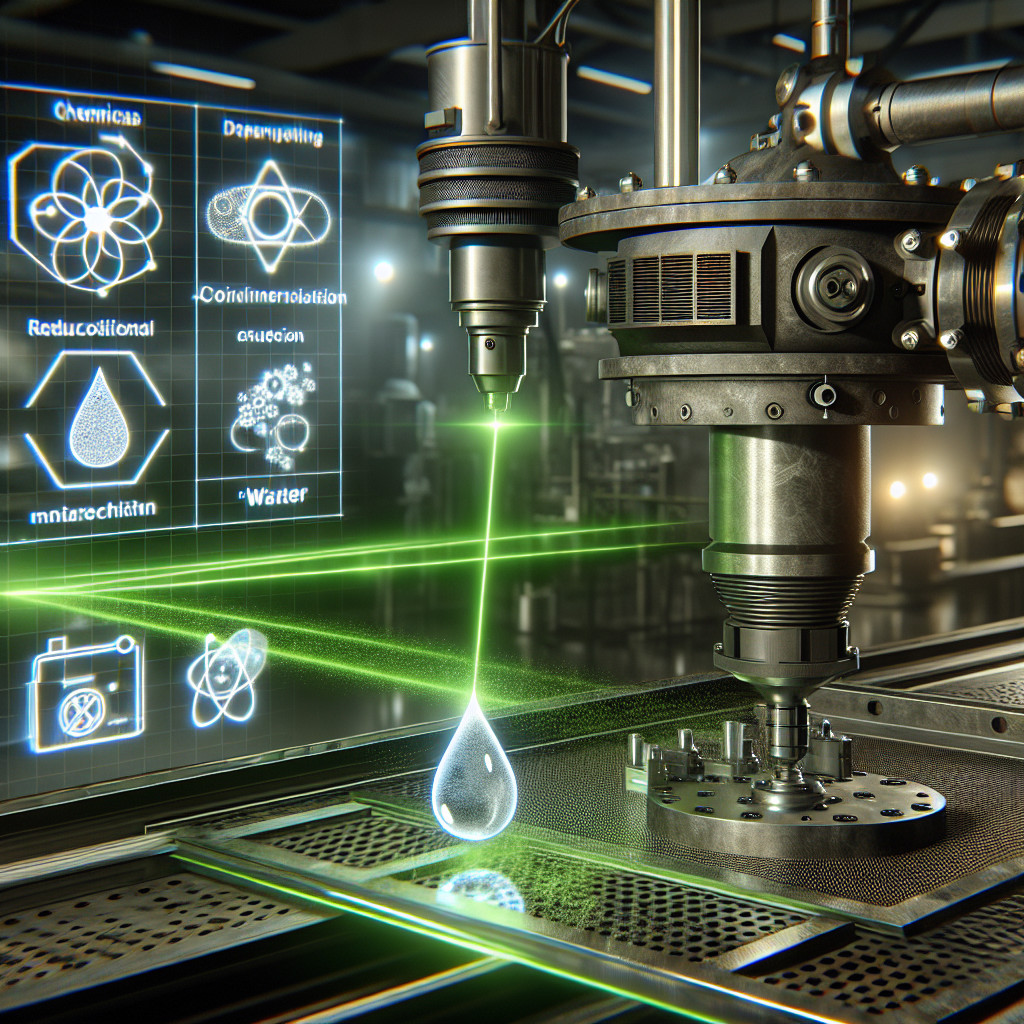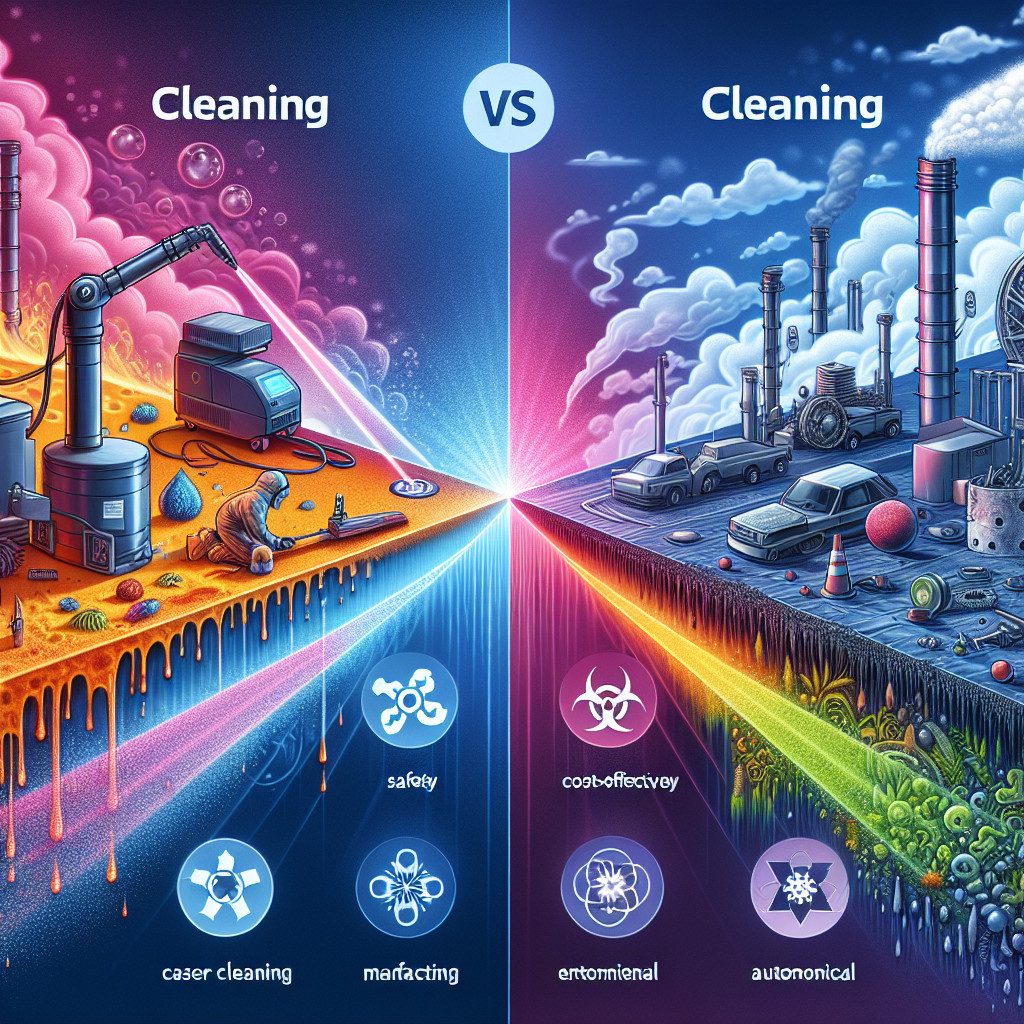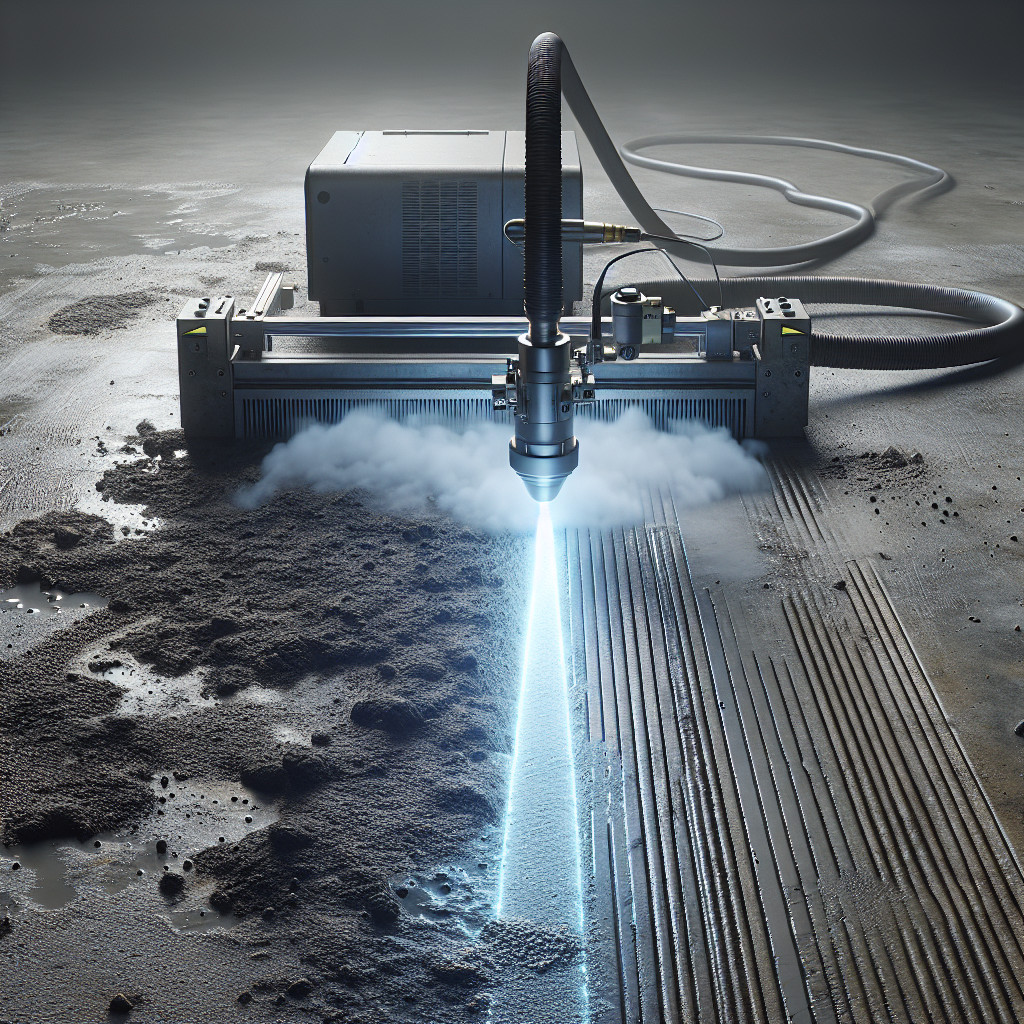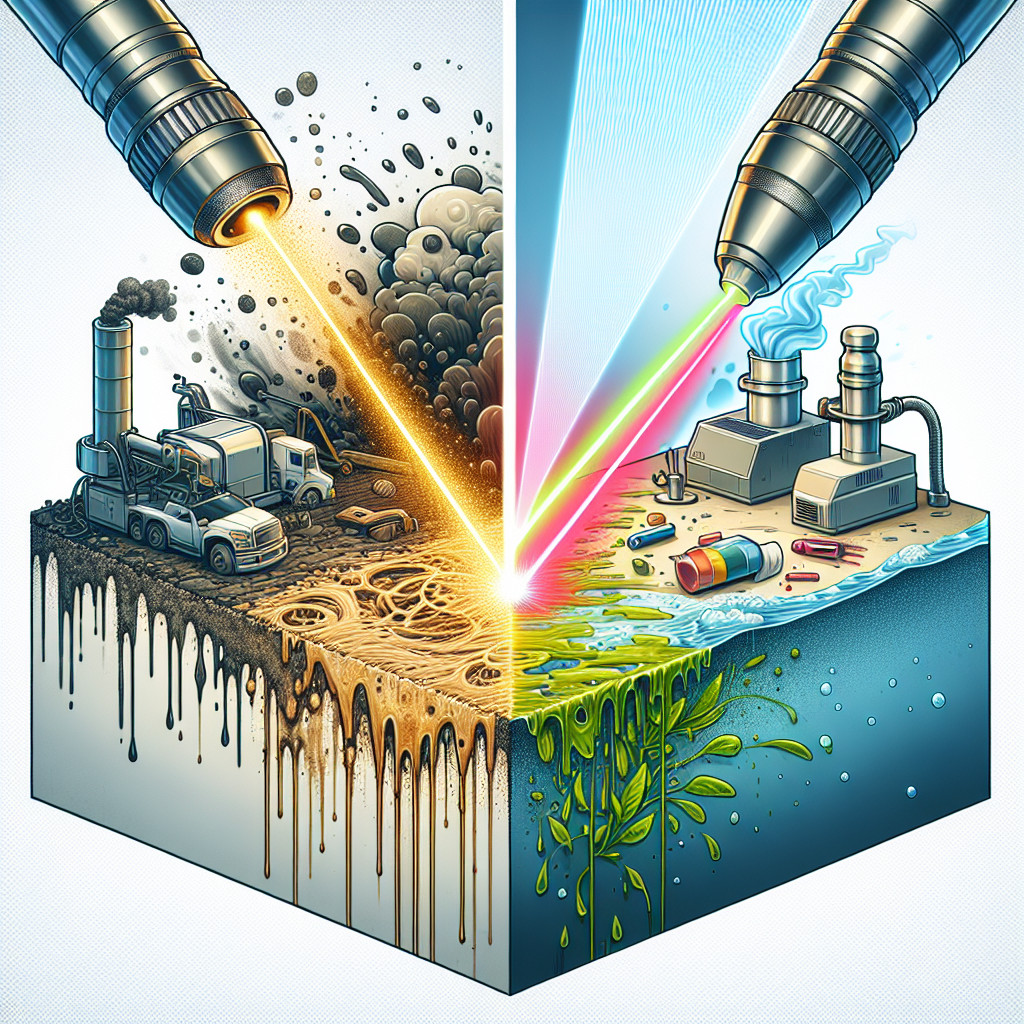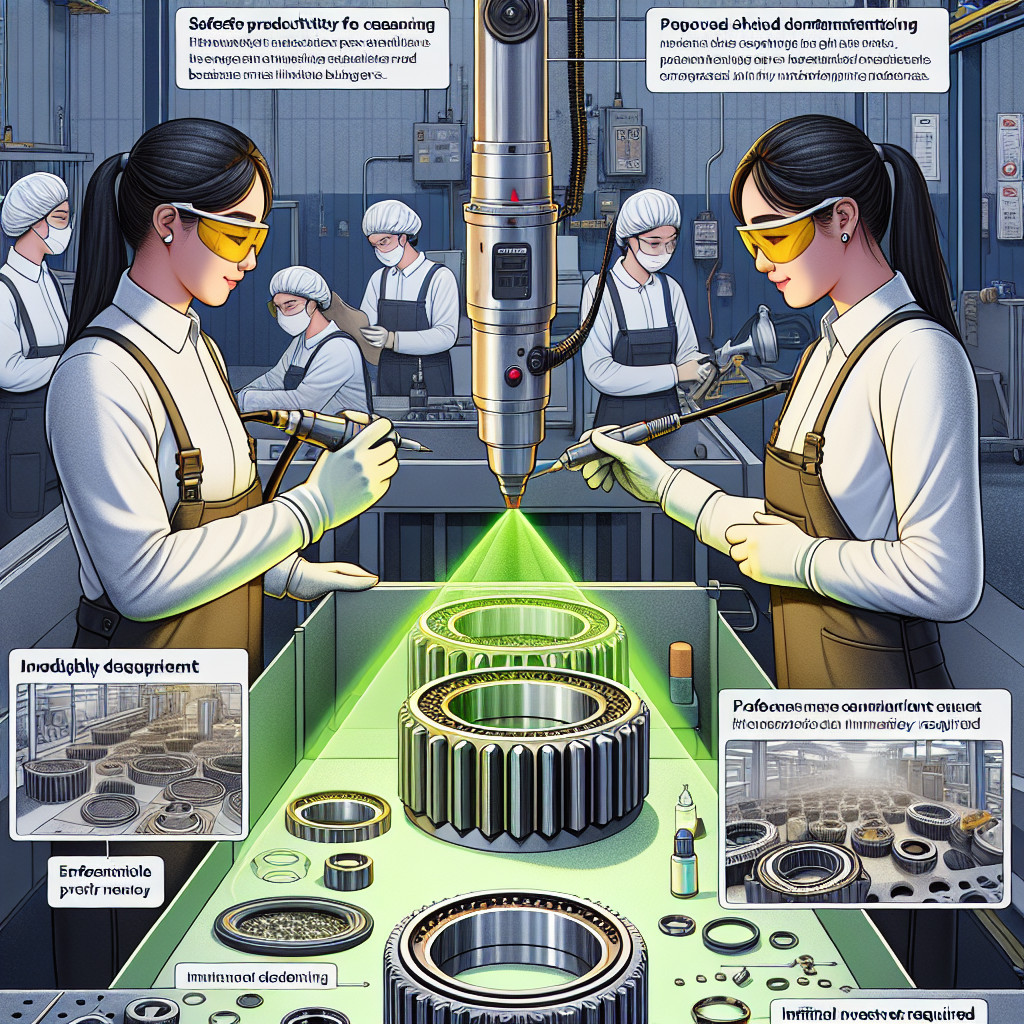
- Challenges of implementing laser cleaning in IT
- Comparison of laser cleaning with traditional cleaning methods
- Safety considerations for laser cleaning in IT
- Future trends in laser cleaning technology for the IT industry
- Comparison of different types of lasers used for cleaning in IT
- Energy efficiency of laser cleaning in IT
- Potential for automation in laser cleaning processes for IT
- Potential for predictive maintenance using laser cleaning data in IT
Challenges of implementing laser cleaning in IT
One of the main challenges of implementing laser cleaning in IT is the cost associated with acquiring and maintaining the necessary equipment. Laser cleaning systems can be expensive to purchase and require regular maintenance to ensure optimal performance. Additionally, training personnel to operate the equipment effectively can also add to the overall cost of implementing laser cleaning in IT.
Another challenge is the potential safety hazards associated with laser cleaning technology. Laser beams can cause eye damage and skin burns if proper safety precautions are not taken. It is important for IT professionals to receive adequate training on how to safely operate laser cleaning equipment to minimize the risk of accidents and injuries.
Furthermore, the effectiveness of laser cleaning technology can be influenced by various factors, such as the type of surface being cleaned and the properties of the contaminants present. It is important to conduct thorough testing and evaluation to determine the most suitable laser cleaning parameters for specific IT applications.
In addition, the integration of laser cleaning technology into existing IT systems and processes can be complex and time-consuming. IT professionals may need to modify existing workflows and protocols to accommodate the use of laser cleaning technology, which can disrupt operations and require additional resources.
Despite these challenges, the benefits of implementing laser cleaning in IT are significant. Laser cleaning technology offers a fast and efficient method of removing contaminants from surfaces without the use of chemicals or abrasive materials. This can help to improve the overall cleanliness and performance of IT equipment, leading to increased productivity and reduced maintenance costs.
In conclusion, while there are challenges associated with implementing laser cleaning in IT, the potential benefits make it a worthwhile investment for many industries. By addressing issues related to cost, safety, effectiveness, and integration, IT professionals can successfully incorporate laser cleaning technology into their operations to achieve cleaner and more efficient IT systems.
#laser cleaning, #IT, #challenges, #technology, #safety, #efficiency, #integration, #cost, #contaminants
słowa kluczowe: laser cleaning, IT, challenges, technology, safety, efficiency, integration, cost, contaminants
frazy kluczowe: laser cleaning technology challenges in IT, implementing laser cleaning in IT, benefits of laser cleaning in IT, laser cleaning safety hazards, laser cleaning cost considerations, laser cleaning effectiveness in IT applications.
Comparison of laser cleaning with traditional cleaning methods
Traditional Cleaning Methods
- Chemical cleaning
- Mechanical cleaning
- Ultrasonic cleaning
- Steam cleaning
Laser Cleaning
- Uses a high-powered laser beam to remove contaminants
- Does not require the use of chemicals or abrasive materials
- Can be used on a variety of surfaces, including metal, plastic, and glass
- Produces minimal waste and is environmentally friendly
Comparison
When comparing laser cleaning with traditional methods, several factors should be considered:
- Precision: Laser cleaning offers greater precision, allowing for more targeted cleaning of specific areas.
- Speed: Laser cleaning is typically faster than traditional methods, reducing downtime and increasing productivity.
- Environmental impact: Laser cleaning produces less waste and does not require the use of harmful chemicals, making it a more environmentally friendly option.
- Cost: While laser cleaning may have a higher upfront cost, it can be more cost-effective in the long run due to reduced maintenance and cleaning times.
Overall, laser cleaning is a versatile and efficient cleaning method that offers several advantages over traditional methods. However, the best cleaning method will depend on the specific application and requirements of the task at hand.
Hashtags:
#laser #cleaning #technology #traditional #methods
Keywords:
Laser cleaning, traditional cleaning methods, precision, speed, environmental impact, cost
Long-tail phrases:
Comparison of laser cleaning with traditional cleaning methods, advantages of laser cleaning, environmentally friendly cleaning options
Safety considerations for laser cleaning in IT
Here are some important :
1. Eye protection: Laser beams can cause serious eye injuries if proper eye protection is not worn. Workers should always wear appropriate laser safety goggles when operating laser cleaning equipment to protect their eyes from potential harm.
2. Fire hazards: Laser beams can generate a significant amount of heat, which can pose a fire hazard if not properly controlled. It is important to ensure that the work area is free of flammable materials and that proper fire safety measures are in place.
3. Electrical hazards: Laser cleaning equipment operates on high voltages and can pose a risk of electrical shock if not handled properly. Workers should be trained on how to safely operate and maintain laser cleaning equipment to prevent accidents.
4. Exposure to fumes: Laser cleaning can produce fumes and vapors that may be harmful if inhaled. It is important to ensure proper ventilation in the work area and to use appropriate respiratory protection when necessary.
5. Training and certification: Workers who operate laser cleaning equipment should undergo thorough training and certification to ensure they understand how to safely use the equipment and follow proper safety protocols.
In conclusion, while laser cleaning offers many benefits for IT professionals, it is important to prioritize safety to prevent accidents and injuries. By following proper safety protocols and using appropriate protective equipment, workers can safely and effectively use laser cleaning technology in the IT industry.
#laser #cleaning #safety #IT #eye protection #fire hazards #electrical hazards #exposure to fumes #training and certification
frazy kluczowe:
– industry
– Importance of eye protection in laser cleaning
– Preventing fire hazards in laser cleaning operations
– Mitigating electrical hazards in laser cleaning processes
– Ensuring proper ventilation in laser cleaning workspaces
Future trends in laser cleaning technology for the IT industry
1. Increased automation
One of the key trends in laser cleaning technology for the IT industry is the increased automation of the cleaning process. As companies look to streamline their operations and reduce costs, automated laser cleaning systems are becoming more common. These systems can be programmed to clean specific areas of a surface with precision, making the process more efficient and effective.
2. Integration with robotics
Another trend in laser cleaning technology is the integration of lasers with robotics. By combining laser cleaning technology with robotic systems, companies can further improve the efficiency and accuracy of the cleaning process. Robots can be programmed to move the laser across a surface in a controlled manner, ensuring that contaminants are removed effectively.
3. Development of new laser technologies
As technology continues to advance, new laser cleaning technologies are being developed that offer improved performance and capabilities. For example, some companies are working on developing lasers that can clean surfaces at a faster rate or with greater precision. These advancements will help to further enhance the effectiveness of laser cleaning in the IT industry.
4. Expansion into new applications
While laser cleaning technology is already widely used in the IT industry, there is potential for its expansion into new applications. For example, lasers could be used to clean delicate electronic components or to remove contaminants from hard-to-reach areas. As companies continue to explore the capabilities of laser cleaning technology, new applications are likely to emerge.
5. Focus on sustainability
With an increasing emphasis on sustainability in the IT industry, laser cleaning technology is well-positioned to meet the growing demand for environmentally friendly cleaning solutions. By eliminating the need for chemicals and abrasive materials, laser cleaning helps to reduce waste and minimize environmental impact. As companies strive to become more sustainable, laser cleaning technology is likely to play a key role in their cleaning processes.
Conclusion
Overall, the future of laser cleaning technology in the IT industry looks bright. With advancements in automation, robotics, new laser technologies, and sustainability, laser cleaning is poised to become an essential tool for companies looking to improve their cleaning processes. As technology continues to evolve, we can expect to see even more innovative applications of laser cleaning technology in the IT industry.
- automation
- robotics
- new laser technologies
- expansion into new applications
- sustainability
- increased efficiency
- precision cleaning
- environmentally friendly
- cost-effective
- advanced capabilities
#laser #cleaning #technology #IT #industry #automation #robotics #sustainability #efficiency #precision #environmentallyfriendly
Comparison of different types of lasers used for cleaning in IT
1. CO2 Lasers
- CO2 lasers are commonly used for cleaning in IT due to their high power and precision.
- They are effective at removing dirt, dust, and other contaminants from electronic components.
- However, CO2 lasers can be expensive to operate and maintain.
2. Fiber Lasers
- Fiber lasers are another popular choice for cleaning in IT.
- They are more energy-efficient than CO2 lasers and can be used for a wider range of applications.
- However, fiber lasers may not be as effective at removing certain types of contaminants.
3. Diode Lasers
- Diode lasers are compact and cost-effective, making them a popular choice for smaller cleaning tasks.
- They are easy to use and maintain, but may not have the same power as CO2 or fiber lasers.
- Diode lasers are best suited for light cleaning tasks on sensitive electronic components.
In conclusion, each type of laser has its own strengths and weaknesses when it comes to cleaning in IT. The best choice will depend on the specific requirements of the cleaning task at hand.
#laser #cleaning #IT #technology #CO2 #fiber #diode #electronic #components #precision #efficiency #maintenance
frazy kluczowe:
– types of lasers used for cleaning in IT
– advantages and disadvantages of different types of lasers
– comparison of CO2, fiber, and diode lasers for cleaning
– laser technology in IT cleaning applications
Energy efficiency of laser cleaning in IT
Here are some key points highlighting the :
1. **Reduced energy consumption**: Laser cleaning requires less energy compared to traditional cleaning methods that rely on the use of chemicals or abrasive materials. This results in lower energy costs and reduced environmental impact.
2. **Precision cleaning**: Laser cleaning is a highly precise method that targets only the contaminants on the surface, leaving the underlying material untouched. This eliminates the need for excessive cleaning and reduces energy consumption.
3. **No waste generation**: Unlike traditional cleaning methods that produce waste materials such as used chemicals or abrasive residues, laser cleaning generates no waste. This not only reduces energy consumption but also minimizes the environmental impact of the cleaning process.
4. **Long-term cost savings**: While the initial investment in laser cleaning equipment may be higher than traditional cleaning methods, the long-term cost savings in energy consumption and reduced waste generation make it a cost-effective solution for IT companies.
5. **Versatility**: Laser cleaning can be used on a wide range of surfaces, including metals, plastics, ceramics, and composites. This versatility makes it a valuable tool for IT companies looking to maintain clean and efficient workspaces.
In conclusion, the makes it a sustainable and cost-effective solution for maintaining clean surfaces in the industry. By reducing energy consumption, minimizing waste generation, and offering precision cleaning capabilities, laser cleaning is a valuable technology for IT companies looking to improve their environmental footprint.
#energyefficiency #lasercleaning #ITindustry #cleaningsolutions
**Keywords**: laser cleaning, energy efficiency, IT industry, sustainability, cost savings
**Long-tail phrases**: energy-efficient cleaning solutions in IT, environmentally friendly laser cleaning, cost-effective cleaning methods for IT companies.
Potential for automation in laser cleaning processes for IT
Automation in laser cleaning processes can streamline the cleaning process, reduce human error, and increase productivity. By using robotics and artificial intelligence, companies can ensure consistent and thorough cleaning of IT components.
- Robotic arms can be programmed to move the laser beam precisely over the surface of IT components, ensuring thorough cleaning without the risk of human error.
- Artificial intelligence algorithms can analyze the condition of IT components and adjust the cleaning parameters accordingly, optimizing the cleaning process.
- Automated systems can also track and record the cleaning process, providing valuable data for quality control and compliance purposes.
Overall, automation in laser cleaning processes for IT has the potential to revolutionize the way IT components are cleaned and maintained. By harnessing the power of robotics and artificial intelligence, companies can improve efficiency, reduce costs, and ensure the longevity of their IT equipment.
Keywords:
Laser cleaning, automation, IT industry, robotics, artificial intelligence, efficiency, precision, contaminants, electronic devices, productivity
Long-tail phrases:
Advancements in technology, potential for automation, laser cleaning processes, delicate IT components, robotic arms, artificial intelligence algorithms, quality control, compliance purposes, improve efficiency, reduce costs
#laser cleaning, #automation, #IT industry, #robotics, #artificial intelligence, #efficiency, #precision, #contaminants, #electronic devices, #productivity
Advancements in technology, potential for automation, laser cleaning processes, delicate IT components, robotic arms, artificial intelligence algorithms, quality control, compliance purposes, improve efficiency, reduce costs
Potential for predictive maintenance using laser cleaning data in IT
Benefits of using laser cleaning data for predictive maintenance
There are several benefits to using laser cleaning data for predictive maintenance in IT systems. One of the main advantages is the ability to detect potential issues before they become major problems. By analyzing data from laser cleaning processes, companies can identify patterns and trends that indicate when a component is likely to fail. This allows for proactive maintenance to be performed, reducing the risk of unexpected downtime.
Another benefit of using laser cleaning data for predictive maintenance is the ability to optimize maintenance schedules. By analyzing data on the condition of components, companies can determine the optimal time to perform maintenance tasks. This can help to reduce costs and minimize disruption to operations.
Challenges of using laser cleaning data for predictive maintenance
While there are many benefits to using laser cleaning data for predictive maintenance, there are also some challenges that companies may face. One of the main challenges is the complexity of the data. Laser cleaning processes generate large amounts of data, which can be difficult to analyze and interpret. Companies may need to invest in advanced analytics tools and expertise to make use of this data effectively.
Another challenge is the need for accurate and reliable data. Laser cleaning processes can be affected by a variety of factors, such as environmental conditions and operator error. Companies must ensure that the data they collect is accurate and reliable in order to make informed decisions about maintenance tasks.
Conclusion
Overall, the potential for predictive maintenance using laser cleaning data in IT is significant. By leveraging data from laser cleaning processes, companies can improve their predictive maintenance capabilities and reduce downtime. While there are challenges to overcome, the benefits of using laser cleaning data for predictive maintenance make it a valuable strategy for ensuring the reliability and efficiency of IT systems.
| Key Benefits | Challenges |
|---|---|
| Detect potential issues early | Complexity of data |
| Optimize maintenance schedules | Need for accurate data |
#predictivemaintenance #laserdata #ITsystems #reliability #efficiency #downtime #maintenance #analytics #challenges #accuracy #reliability
słowa kluczowe: predictive maintenance, laser data, IT systems, reliability, efficiency, downtime, maintenance, analytics, challenges, accuracy, reliability
frazy kluczowe: potential for predictive maintenance, laser cleaning data, proactive maintenance, optimize maintenance schedules, reduce downtime, advanced analytics tools, accurate data, reliable data, environmental conditions, operator error.
- Laser cleaning and long-term cost savings – cost analysis - February 29, 2024
- Laser cleaning and reducing emissions of harmful substances - February 28, 2024
- Can laser cleaning be used in veterinary medicine? - February 28, 2024



